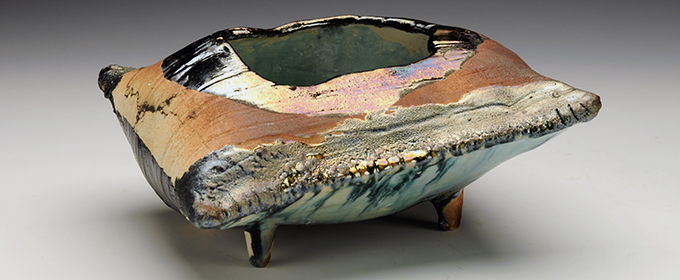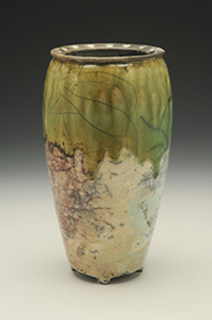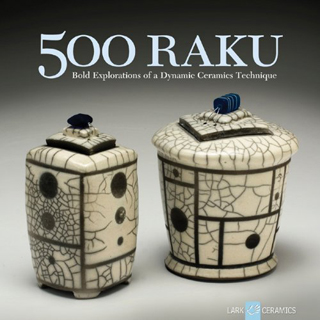I’m honored that two of my pieces, “Raku Shinji Green Vase” and “Raku Pillow Pot” are featured in the new Lark 500 series ceramics book, 500 RAKU.
“Raku is an ancient ceramics technique enjoying a modern-day renaissance. This groundbreaking new entry in the highly successful 500 Series demonstrates the vitality and invention of today’s raku ceramics. Objects including cups, plates, bowls, vases, and statuary contribute to this international gallery of work juried by Jim Romberg, one of the leading practitioners and teachers of raku in the world. The publication is scheduled for release in spring 2011.”
Raku is a special ceramic firing process using fire and smoke to create unique patterns, designs, and often colorful metallic lusters. Ware destined for raku is first bisque-fired. Then it is glazed in preparation for the raku firing process.
The raku firing process requires a special kiln, usually fueled by propane. At temperatures of about 1800°F (about 982°C), the glaze begins to melt and appears “slimy.” The raku piece, still hot and glowing, is removed from the kiln using specially-designed raku tongs. When the red-hot ware is placed inside a metal can full of combustible material (such as sawdust, pine needles, or shredded newspaper), heat causes the material to ignite.
After the combustible material ignites, a lid is placed over the can so the raku ware is sealed inside. Raku pieces are made from clay that is capable of withstanding thermal shock. Other clays might crack from the drastic temperature changes.
As flames consume the oxygen within the can, they also draw oxygen out of the raku ware and glaze. This process is called post fire reduction. Because it is created through the natural process of oxygen removal or reduction, the unique character of raku-fired ware is very unpredictable.
After remaining in the sealed metal can with the combustible material for a period of time, the raku ware is traditionally removed and placed in a can of water. This freezes the patterns that were created during the post fire reduction stage. How long a piece remains in the cooling water depends on the piece, its size, and the artist’s preference.
Raku firings are the most exciting and fun at night, in the company of raku-crazed friends. Glowing pots coming out of the kiln are dramatic and the results often take my breath away.
Clay, fire, and friends. What else is there? Life is good.


